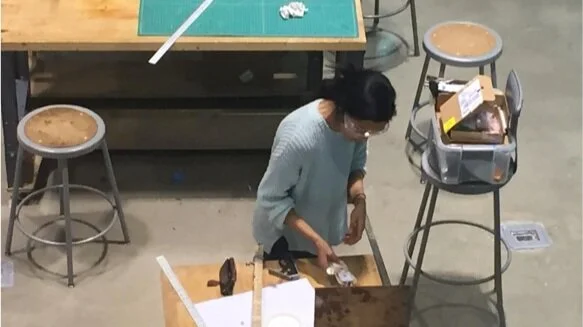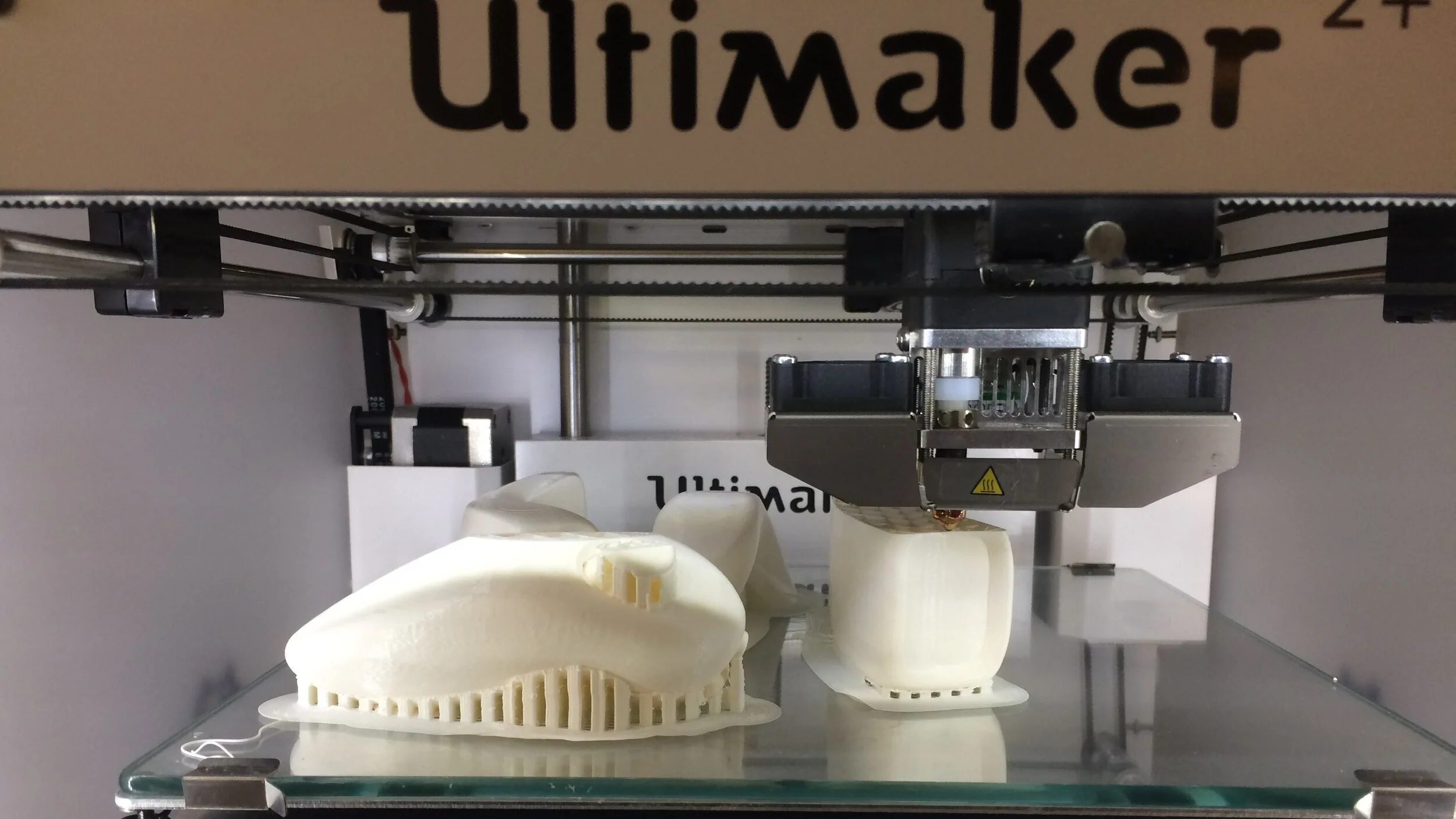Bringing value based care into the treatment of foreign object ingestion.
Inspezzo
The Challenge:
Every year, children in the United States die or are seriously harmed from the ingestion of button cell batteries. These batteries are commonly found in a wide variety of household items, including: hearing aids, games and toys, watches, calculators, and other electronic devices. If ingested, these batteries can get lodged in the esophagus and be fatal within two hours.
There are over 80,000 foreign body ingestions (FBIs) reported each year for children between 6 months and 3 years (Source). Of these FBIs, there are approximately 3,500 button battery ingestions reported in the United States each year (Source). The most serious cases typically involve 20 mm button cell battery that can become lodged in the esophagus, causing the esophagus to burn, requiring the need for feeding tubes and possibly result in death within two hours.
Typically the first line of defense for identifying these potentially fatal objects is x-rays. Even still, x-ray machines are not always accurate, as coins and button batteries often look quite similar, with both having very different treatment paths.
The background.
As part of NUvention Medical, a 6-month interdisciplinary experiential learning program designed to expose students to the entire innovation and entrepreneurial life cycle of new medical technologies. The objective was to identify an area of opportunity in healthcare, develop a solution, and create a viable business plan that was presented to investors and key opinion leaders in healthcare. After the program, I continued Inspezzo as my EDI thesis project, where I was working individually to create a holistic end-to-end user experience using human-centered methodologies.
The team was awarded best pitch, presentation, and tech demo by panel of venture capitalists and leaders in the healthcare field.
The team.
A multi-disciplinary team, consisting of students from Feinberg School of Medicine, Northwestern University Law School, Kellogg School of Management, McCormick School of Engineering & Applied Science in collaboration with 2 doctors who patented a new technology for the detection of an ingested battery or magnet.
Team: Katrina Shah (Lead Engineer & Designer), Alex Schwiebert (JD, MBA), Andrew Shane (MBA, MSDI), Robert Nagel (MBA), Amalie Thavikulwat (MD), Vivek Prakash (MD), Claus-Peter Richter (MD, PhD, Associate Professor of Engineering), Bharat Bhushan (PhD, research assistant professor of otolaryngology - Head & Neck Surgery), Jim Wicks (Thesis Advisor, Director of MS Engineering Design Innovation)
The process (at a glance).
Shadowing & Needs Finding
Our team did primary and secondary research through shadowing/ clinical observation, literary review, and interviews with key opinion leaders to explore potential opportunities in the healthcare space from Congestive Heart Failure Readmission to hospital inefficiencies. Our team partnered with 2 inventors who patented a new technology to tackle the challenge of foreign object ingestions.
Quant & Qual Survey Design
To help focus our efforts and better understand user needs, we conducted qualitative & quantitative research with 30+ stakeholders.
Sphere of Influence (5 Whys)
A framework that enabled a deeper understanding of the broader context in which we were designing for, ultimately resulting in a more holistic solutions. The tool also helped prioritize information and areas of focus by capturing degrees of influence and identifying initial design requirements.
Journey Map.
Mapping out the entire journey from when a child first ingest the object to the follow-up x-rays enabled us to have a clear picture of the current workflow, key responsibilities of each user group, and pain points (e.g., emotional, informational, physical).
Developing a Business Plan
Our team collaborated in the development of a business plan that defined the market opportunity, unmet needs, business model & commercial strategy, patent research, device classification, reimbursement, and more.
Internal technology development
As the lead engineer, I was responsible for building the internal technology under the guidance of two inventors.
Prototype, test, build & iterate
From leveraging co-creation activities with clay models to rapid prototyping via 3D printing, I was able to quickly evolve and iterate each design after testing with a variety of end-users.
30+ Stakeholder Interviews
There are many stakeholders from hospital management, EMT, radiologists, ENT surgeons, pediatricians, parents, veterinarians that are impacted by FBI. Through exhaustive in person observations, surveys, and interviews we evaluated the potential benefit to each of these stakeholders. Many compelling value propositions were identified including reduced litigation expense from misdiagnosis for hospital administration, clarity over traditional x-rays for emergency department doctors, and confidence when referring patients for pediatricians. Generally, there was also consensus that identifying whether a battery was present early on could improve the process of care given in many ways.
“The amount of stress involved in the entire process is indescribable. Not knowing what happened. Not knowing where to start for treatment, not being seen right away when I knew something was terribly wrong. I felt dismissed. It made me so, so angry.”
— Parent
“We don’t do x-rays all the time because of large concerns for radiation. Ultrasound would find it to, but you have to schedule something with radiologist, depending on copay and deductible patient has, it can be couple of hundreds of dollars where something in the end you realize it was a coin ingested and you’re back to square one.
—Pediatrician
"In pediatric emergency medicine, one of the biggest breakthroughs is when kids fall and hit their heads, there’s an algorithm that helps break them up into who needs a CT scan and who doesn’t. Say low risk group is small, you’ve saved 10% from having wait for 3 hours, incurring lots of cost. If you can at least differentiate between who needs to go to the emergency department and who doesn’t you saved a group of people from having to go through this process.”
— Pediatric Emergency Medicine Fellow
Key Insights
Guiding Parents Early On
Parents want to be guided step-by-step and need to know what exactly to do in response to the device outcome.
Peace of Mind
The most promising commercial benefit is peace of mind for parents and grandparents, who have a high desire and level of importance for such detection ability.
Site of Care Changes
Children diagnosed at a hospital are often required to be transported elsewhere for treatment, resulting in new environments and clinical teams, making continuity of care critical.
Can’t replace the X-ray
Locating where in the body the object is is not as important as identifying the type of object, given an x-ray will be done no matter what.
Clinical Value
The most promising clinical benefit of this device is early detection to facilitate provider decisions, including activating on-call staff, determining severity for triage purposes and prioritizing patients in the emergency setting.
Focusing Outside Tier 1 Hospitals
The largest opportunity areas are primarily outside of Tier 1 hospitals where resources and staff are limited (e.g., x-rays)
Design Research
While there are numerous stakeholders, there are 2 primary end users of the product. The first being kids who may have ingested the foreign object and the physician, such as a pediatrician or EMT, who is performing the initial diagnosis.
Kids
During interviews, it became quite evident that the entire process is overwhelming, stressful, and chaotic for both parent and child. It became imperative that the experience is one that brings comfort and alleviates concern. As a result, the physical design embodies attributes of soft, friendly, and non-invasive.
Health Care Providers
For clinicians, it was imperative that Inspezzo integrates into their current workflow, both from a technology standpoint and existing mental models. It was also critical that the design’s perception was one that offered high tech, precision, and accuracy. Thus, the final design was one that needed to work for both kids and providers.
System Architecture Iterations & Key Learnings
All-in-One Handheld device
The first system architecture explored was an all-in-one product that would detect whether an object was present and the type of object it was suspected to be.
Key Learning: While diagnosis of the FBI was critical, the follow-up and tracking of the object was equally important to ensure succesful passing through the digestive tract. While it was small and compact, I learned that there wasn’t enough information provided to help make a well informed decision post-diagnosis.
Dedicated tablet & tethered screening tool
The second system architecture was a dedicated tablet with a tethered screening tool, that provided the necessary information and insured that the small screening tool would not get lost in a busy environment.
Key Learning: Because this is not a device that would have high frequency of use, it would be a waste of resources to introduce an entirely new tablet that could not be used for other purposes throughout the day.
Portable screening tool with app
The final system architecture focused on integrating with current tools that are being used, whether it is a laptop, tablet, or desktop. The ecosystem consistent of a portable screening tool that worked in unison with an app. This decreases the cost of the device and better integrates with the existing workflow.
Final Inspezzo Ecosystem
Portable Screening Tool
Desigined to be comf and work in various handheld positions
Detect and differentiate ingested objects
Connect to any smart device via Bluetooth
2 sizes for different age groups (>3 or <3 years)
App
Integrate with EMR
Used to indicate object location on the body
Get information on type of object
Capture and monitor object progression
Store and transfer data to other facilities
Locate portable screening tool
Charging Station
Central location for access to multiple providers
Notifies when device has been missing for a given period of time
‘Defibrillator-like’ presence
Infographic
Communication tool between physician and parent to provide clarity and transparency around what to expect
Quick reference chart for appropriate triaging


















